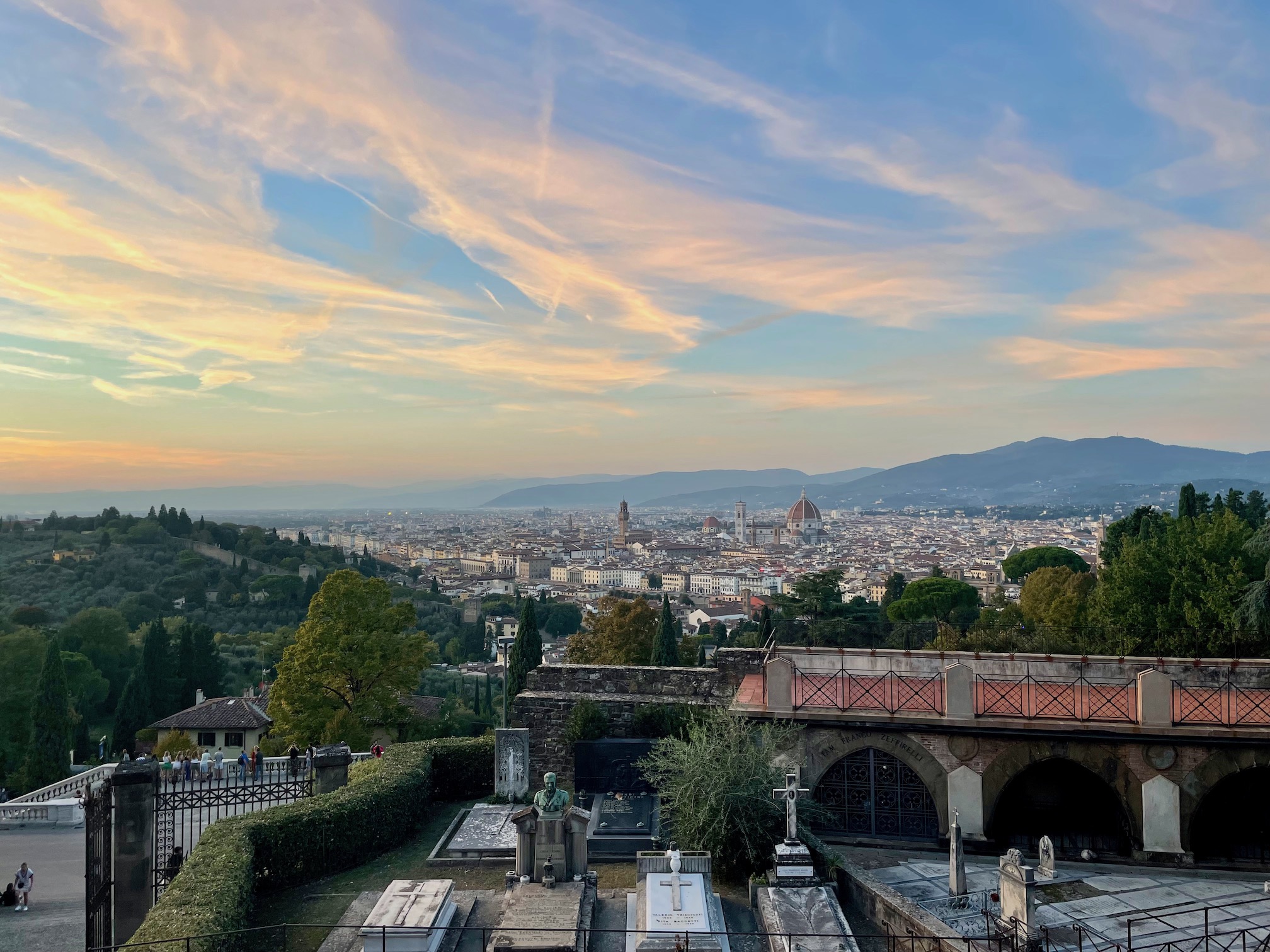Italy
Milan, Dolomites, Venice, Florence, Cinque Terre, Rome

Somehow exactly as expected, and totally unexpected
This was my first international trip since December 2019, and one of my longest at about 2.5 weeks. I had been to Rome before, but nowhere else in Italy and was eager to explore. The trip started in Milan, before detouring to the Dolomites and Venice, then staying in Florence for almost ten days, and ending in Rome. It was a mix of fast paced and leisure, incredible mountains and one of a kind art, history and culture.
Summary
This is a trip that could have been broken up into multiple pages, but I decided to put them all together since it was planned together. In terms of schedule, this is the amount of time we spent in each place. I was generally satisfied with the amount of time we spent in each, though it might have paid off to stay another day in Milan to get over the jet lag.
- Milan: 1 day, 1 night - we largely just used this city to fly into
- Dolomites: 2 days, 2 nights - we based in Cortina d'Ampezzo
- Venice: 1 day, 1 night
- Florence: 10 days, 11 night - including a weekend trip to Cinque Terre and day trip to Pisa, before heading back
- Rome: 2 days, 3 nights - I sped around since I had been here before
We visited quite a few attractions and monumenents, but also some of the memorable moments were when we just explored and wandered. I am quite fond of browsing the work of the artists who paint on the streets. Providing significantly more detail for the itinerary in a compact format, the spreadsheet is below.
Spreadsheet
Milan
Day 1
As mentioned, Milan was primarily a stopover for us to fly into. I flew in direct from JFK and arrived in the morning, giving me almost a full day in the city. From the airport, it was easy enough to take the Malpensa Express into the main train station in the city (Milano Centrale) and drop off my luggage at the Airbnb we were staying in.
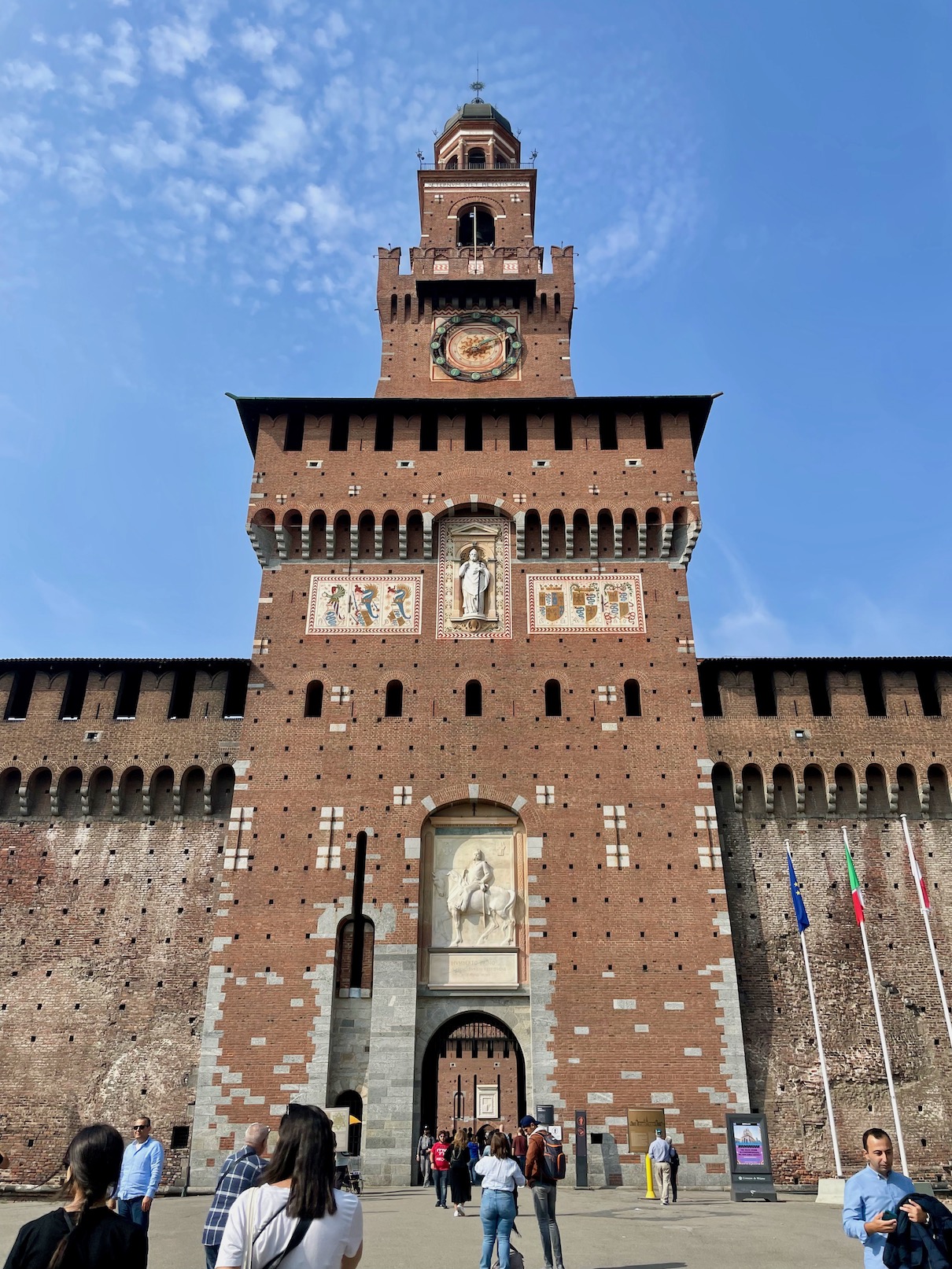

After grabbing a quick lunch and freshening up, I went to explore the city. It was a brisk 30 or so minute walk from Milano Centrale through the Brera District to Castello Sforzesco, an old fortification originally built by one of the Dukes of Milan. It was free to wander around the main courtyard and around the fort, though it looked as if there were also ticketed exhibitions inside the actual buildings if interested. Since I had limited time, I just took a stroll around the courtyard.
The main attraction in Milan I wanted to see was the Duomo, or Cathedral. I pre-bought fast track tickets to the rooftop (which also included admission into the cathedral, adjacent church, and archeological sites). I'm not entirely sure it was necessary to pre-buy, but again since I had a relatively tight schedule I didn't want to risk missing the site due to long lines. Certainly, there was quite a crowd in front of the catheral itself (the most people I'd seen for a long time!).




The exterior of the cathedral was a beautiful work of art, and I unashamedly spent a bit of time taking photos. With the tickets I had, I took the elevator up to the rooftop, where it was very cool to be able to look down to where I had been standing before. The main spiral was undergoing restoration so I was unable to get really a close up glance of the spiral, but the rest of the rooftop was largely accessible. After exiting the rooftop, I landed inside the cathedral itself. There happened to be an organ performance occurring as I entered, which was a magical experience (if also giving off slight horror movie vibes). I could see how the acoustics of the church, paired with the high ceiling and stained glass gave it a sense of radiance and worship.
Next to the main cathedral, I also stopped at the the Duomo Museum, where many of the sculptures from the cathedral were preserved, as well as Galleria Vittorio Emanuele II, a shopping galley, with glass arcades. After grabbing some gelato (a must do in Italy!), I headed back to the Airbnb to meet up with my friends who were arriving later that evening.
Dolomites
To be very frank, while I knew the Dolomites were on our list of places to go, I had pretty low expectations for the "nature" we'd see in Italy, especially compared to North America. My expectations were blown out of the water. The dolomites ended up being one of the most beautiful areas I had seen, made even more picturesque by the beginning of the fall colors. This was a highlight of the whole trip.
Day 2

From Milan, the next day we rented a car and drove to Lago di Braies (or Pragser Wildsee, depending if you are from Italy or Austria), a picturesque lake nestled up North. We made a stop in Trento for lunch, walked around the small town, and sipped on some wine from the region. This broke up our almost 5 hour drive into a slightly more manageable chunk, though to be honest, we were still hit relatively hard from the jet lag. We stayed in B&B Hotel Passo Tre Croci Cortina, which (somewhat accidentally) ended up being a perfect location for our planned hikes.


We finally made it to Lago di Braies, where it became clear why we had added the Dolomites as a stop in our trip. The stroll around the lake is relaxed and quite easy (~1 hour, ~2 miles, pretty flat), but extraordinarily beautiful. I can see why its an "instagrammable" lake, the reflective nature of the lake paired with the surrounding mountains easily made the lake look bigger than it probably really was and the lighting gave a mysterious aura. Aside from the beginning of fall colors, our trip in fall also afforded us good temperatures, which ended up being perfect for the longer hikes we did in the region in the following days.
Day 3

The following day we headed out for our longest hike in the area, to Lago di Sorapis through Passo Tre Croci. Not intentionally, it turned out the hotel we booked was right at the trail head, so we didn't even have to drive! The hike clocks in at about 8.8 miles, 2600 ft of elevation, and 5 hours (including stops). The trail was well marked and I believe there are a few ways to get to the lake, though I liked the way we did as it made the trip into a loop. One caveat is the loop, which we counterclockwise, does contain a bit of a sketchy section through a small scree field. Counter clockwise meant we went up it, rather than down.
From literally the first step onto the trail, I kept on taking photos, and for me, that's a sign of an amazing view. The beginning isn't too hard, as the elevation gradually ascends pretty steadily. Certainly not easy per se, but there's plenty of great scenery to just stop, rest, and stare at. The trail was largely empty as well, with just our group trekking along, especially in the beginning. Silence feels different when its just you and nature. Along the way, we also ran into a small herd of chamois, which we debated for awhile if they were goat or antelope (turns out they are goat-antelope).

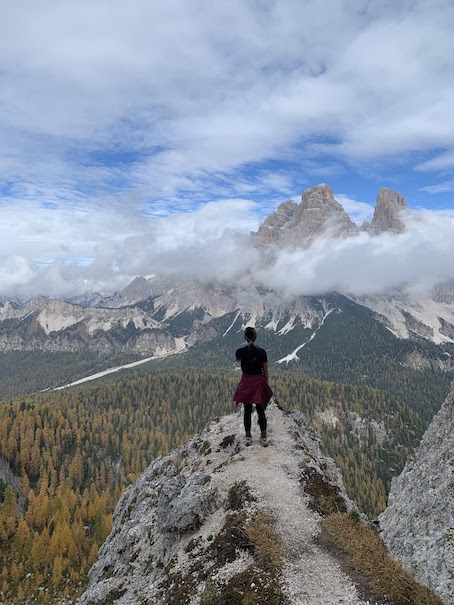
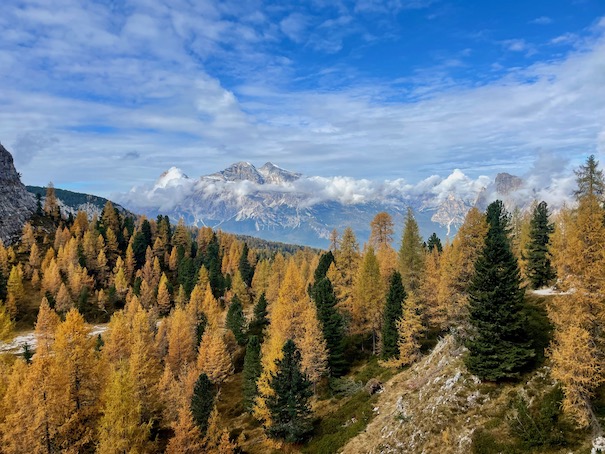

After hauling ourselves up carefully through the scree field (thankfully short, and going up is definitely less scary than going down), we reached Passo Tre Croci, the pass through these sets of mountains. Here, we stopped for a short break and explored a tiny bit of the side tails. From the pass, it was largely downhill (though not always) to the lake. My favorite part of this hike is probably this first section, from the trailhead to the lake. There were some easy "via ferratas" (in the sense there were some iron ropes/cords nailed into the rock), but you really didn't need to hold on or anyting like that. The fall colors, even though we were a bit early, were impressive. I'll let the photos speak for themselves.
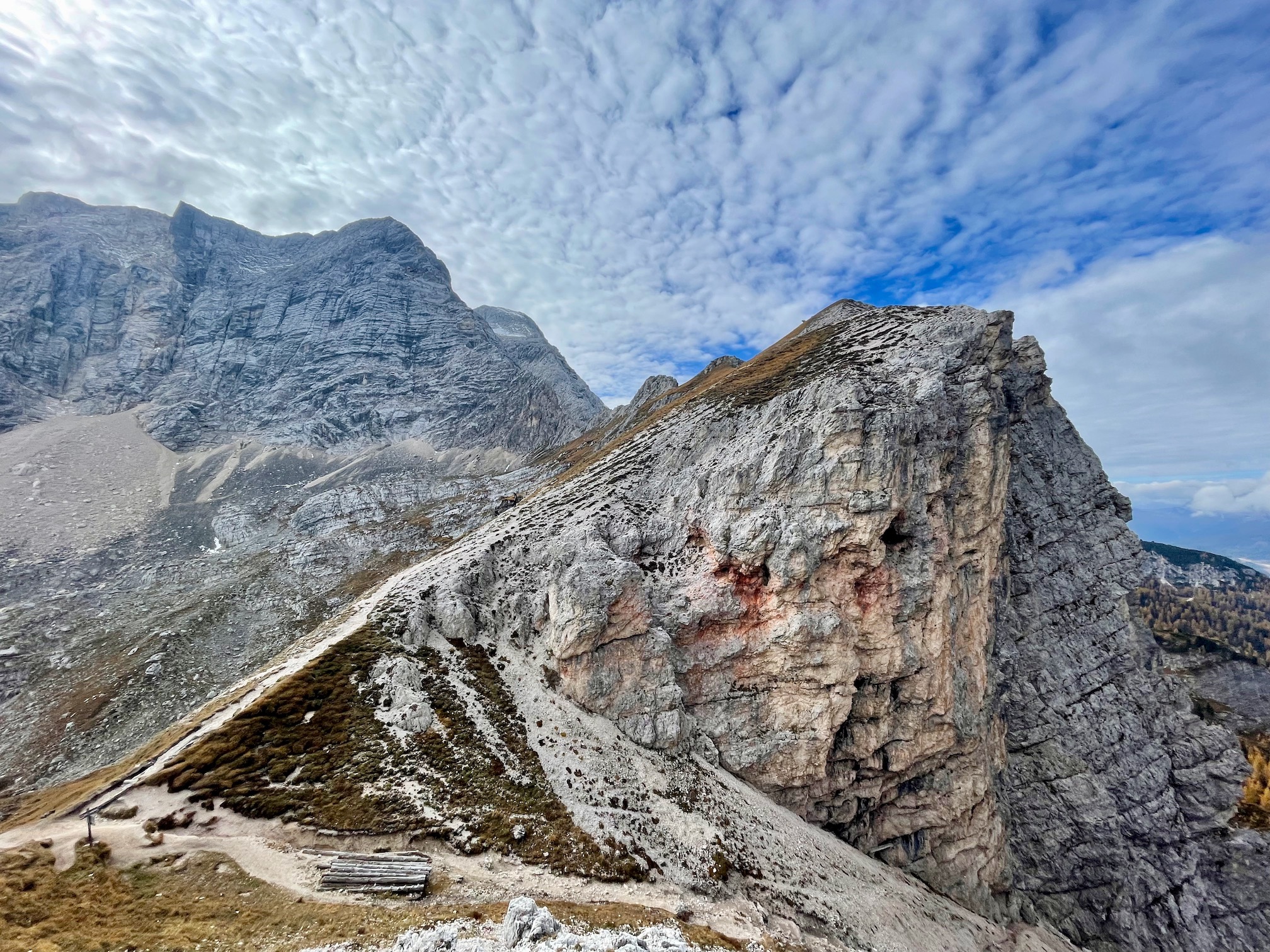


This isn't to say the lake was not pretty, but I wouldn't say it was necessarily the highlight. Because we came in fall, the water levels were pretty low, but the lake was still lovely, with the classic light milky blue color due to glacier/minerals. Again, we took a short rest here before heading back down the trail. The way we headed back from the lake was the more "popular" route to the lake and so we ran into more people there, but still not nearly as crowded as say Yosemite or even Alaska in the summer. After we reached back to the hotel, we took a bit of time to rest and then explored and ate dinner in Cortina D'Ampazzo. We certainly could tell we were there in the shoulder season.


I probably sound like a broken record at this point, but the scenery was out of this world -- you could point your phone anywhere and get amazing photos. The fall colors added another dimension to what was already a top hike for me and I can easily say that this hike ranks within my top 3. If you have the time, do this hike!
Day 4 (morning)

Here we spent half the day in the Dolomites and drove in the early afternoon over to Venice. Our final hike in the area was the iconic Tre Cime di Lavaredo, which is about 6.5 miles long, an elevation gain of 1500 ft, and took about 3.5 hours to complete. We were definitely a bit more tired for this hike, with the jet lag slightly catching up to me, but still, this was a sight to behold. I would rank this probably below the previous day's hike, but I liked the variety even within these three hikes we did. Here was certainly more exposed stone and rock, with the Tre Cime di Lavaredo serving as the anchor as we circled around it.
This was also the least cloudy of the three days we were in the area, so we were able to gaze up at the formations up close and personal and without any cloud covering. The hike essentially encircled the Tre Cime di Lavaredo, so we got a viewpoint of the mountains from pretty much all angles. Another fun fact, they are located extremely close to the Austrian border -- we were joking we probably could see into the country!




After finishing up our hike, we headed over to Venice, about a 3 hour or so drive and arrived in the afternoon. We dropped off our rental car at the Venice Mestre Train Station (it did take some time to figure out that the parking structure next door was where the car was supposed to dropped off to) and took the ~10 min or so train over to the historical center of Venice (aka the island you usually think about when thinking of Venice). We just bought the train tickets there; the trains were pretty frequent.
Venice
Day 4 (afternoon / evening)


I had heard a lot of "eh" things about Venice, but I enjoyed our time there! Yes, it is touristy and crowded. But it really is exactly as you would expect from the city of canals. And surprisingly, if you just went even one block outside of the main tourist corridor, it got almost spookily quiet. We walked from our Airbnb to the Rialto Bridge and wandered around the area for a bit until close to sunset.
I pre-booked tickets at the T Fondaco dei Tedeschi rooftop, which is an arsty shopping gallery. The tickets are for a 15 min slot and are free. It wasn't too hard to book in advance. Sunset was at 6:32 pm, and I had thought I booked the time of 6:30 pm. However, of course being the American I am, I accidentally read 16:30 as 6:30 pm meaning we were over 2 hours late for our slot. Thankfully, the people manning the rooftop were nice enough to overlook my illiteracy and let us go up.
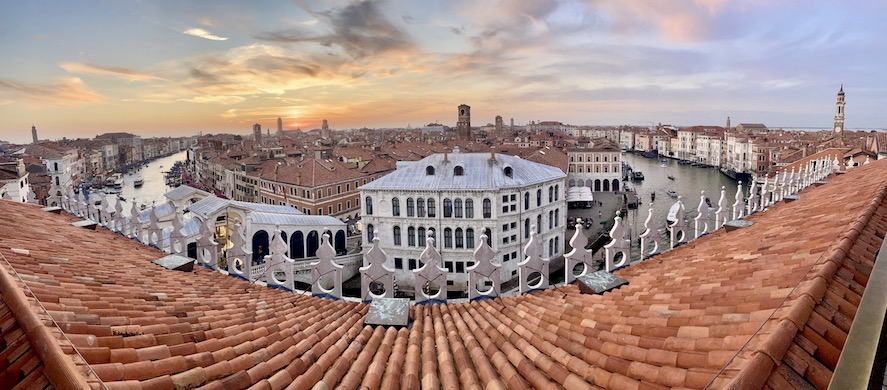
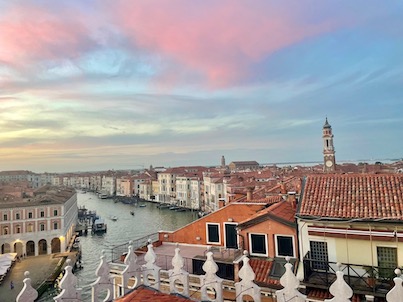

We may have been especially lucky, but the sunset was dead drop gorgeous and probably the best sunset we got on this trip. For a free rooftop, it definitely was worthwile! So good it is the main cover photo for this section :) And of course, after some quick and tasty pasta to go, we had to have some gelato before heading back to the Airbnb.
Day 5


We had another day in Venice to take in the sights before heading out in the early evevning to Florence. Our first stop was the Libreria Acqua Alta, which was a cute little bookstore with cats. From there, we walked to St. Mark's Square / Piazza San Marco, where most of the "touristy" highlights are located. We pre-purchased skip the line tickets for St. Mark's Basilica, which was most certainly worth it. The line stretched around the basilica and given we had limited time I was glad we didn't have to wait in it. We were a bit early so we grabbed some breakfast and walked arond the square.


The basilica differs from some of the others on this trip in its orante gold decoration. It isn't a particularly large cathedral, but certainly worth a look! As we exited the cathedral, we could see water bubbling up in the square, a reminder that Venice sits quite close to and at not very high elevation compared to the ocean, especially as sea levels rise and weather becomes more dramatic. Floods are something that the city has had to learn to deal with more and more. Since our ticket for the Doge's Palace included it anyways, we also went through the Museu Correr across the square to the bascilica.
Our next destination was the Doge's Palace / Palazzo Ducale. This one we also pre-bought tickets for, but didn't seem as necessary as there as no long line. The "palace" was once the residence of the Doge of Venice, essentially the leader of Venice at the time. Accordingly, the palace was a mix of residential, historical, and dramatic. In the Doge's Palace, you can also walk through the Bridge of Sighs, tracing the path that prisoners once took.




From the Doge's Palace, we walked over to the Ponte dell'Accademia, a beautiful bridge over the grand canal, and to the Basilica di Santa Maria della Salute. We were very lucky with bright blue skies while in Venice, and the corresponding reflective blue and greens in the canals made for a scenic walk. After viewing the cathedral, it was time for us to depart Venice so we took a water ferry (vaporetto) back to near our Airbnb. If you don't want to shell out for a gondola ride, this was a convenient and not too expensive way to enjoy Venice from the water.
All in all, while Venice might be dinged for being overcrowded, I found Venice to be surprisingly pleasant -- yes, there are tourists, but every trip is what you make of it, and Venice has plenty to offer. The canals and routes were straight out of a postcard, with sky and sea above and below.
Florence: Part 1
By far the most time we spent in any one city was Florence at theoretically ~10 days, though we also sprinkled in some weekend and day trips, namely to Cinque Terre, a small scale winery experience, and Pisa respectively. This allowed us to slow down the pace quite a bit, whereas the first five days were almost constant sightseeing, and enjoy just being in Italy.
Day 6


One of my favorite ways to start any trip in a city is to go on a free walking tour. We signed for an introductory tour with Tour Tale. Our guide was certainly enthusiastic and the tour gave us a glimpse of the highlights of Florence.
After the tour and lunch, we headed over to the Bascilica of Santa Croce. This was a lovely stop, with an impressive interior, the tombs of famous names, and a small, but peaceful cloister. After visiting the basilica, some of us split off to head back to our Airbnb near the Ponte Vecchio, but I did a bit of shopping :) Florence is historically known for its leather and near the Basilica is the Scuola del Cuoio, the school of leather which was worth dropping by.
Day 7


Florence is known as the birthplace of the Renaissance, and for good reason. There are wonderful museums in the city and one of the key ones to visit is the Galleria dell'Accademia, or the home of the David. It is necessary to prebook tickets for this museum where you enter at a specific time slot. The Galleria dell'Accademia isn't a particularly big museum, but the collection they have does extend beyond just the David itself. Give yourself time to wander around and visit all of the rooms. And of course, the David is completely worth the price of the ticket. I always marvel how these artists are able to create such lifelike and delicate carvings in marble.


In the afternoon, I meandered around the city. Florence is quite walkable, and the location of our Airbnb was central. This is generally how I like to enjoy cities and everything for us was largely within walking distance. I dropped by the San Lorenzo Market/Mercato Centrale, Basilica di San Lorenzo, and Basilica of Santa Maria Novella. All were not long stops and some I just took photos of the outside. One thing you will notice about Florence is the characteristic architecture of the different churches, compared to say what we saw in Venice and would see in Rome.
I also walked through one of the central square, the Piazza della Signoria, which we would pass by throughout our journeys in Florence. There are a few things to see in the square, but one of the key ones for me was the Loggia dei Lanzi, which is a small open air sculpture garden and a reminder of how sculptures were often used for symbolism in public areas.
Weekend Trip: Cinque Terre
On the weekend, we headed out to Cinque Terre and walked the route, in order, to visit the towns of Monterosso, Vernazza, Corniglia (stayed overnight), Manarola, and Riomaggiore. It is possible to reverse the direction if preferred. Of course the downside is it is a mini-backpacking trip and you have to carry your own gear, but gave us a chance to really walk through the routes between the cities. I would strongly recommending walking the route if capable of doing so.
Day 8: Monterosso, Vernazza, Corniglia
We set out relatively early to catch the train from Florence to La Spezia (which gave us a beautiful sunrise over the river), from which we caught another train to Monterosso. The La Spezia -> Monterosso section is a bit more casual, as it is a local train, and comes relatively frequently. Monterosso is near the ocean, and so has some beaches (but slightly mediocre compared to say the Algarve or California). Nonetheless, the shoreline itself was beautiful and we wandered up to a viewpoint before exploring the other side of the city. From there, we set off to our next destination: Vernazza.

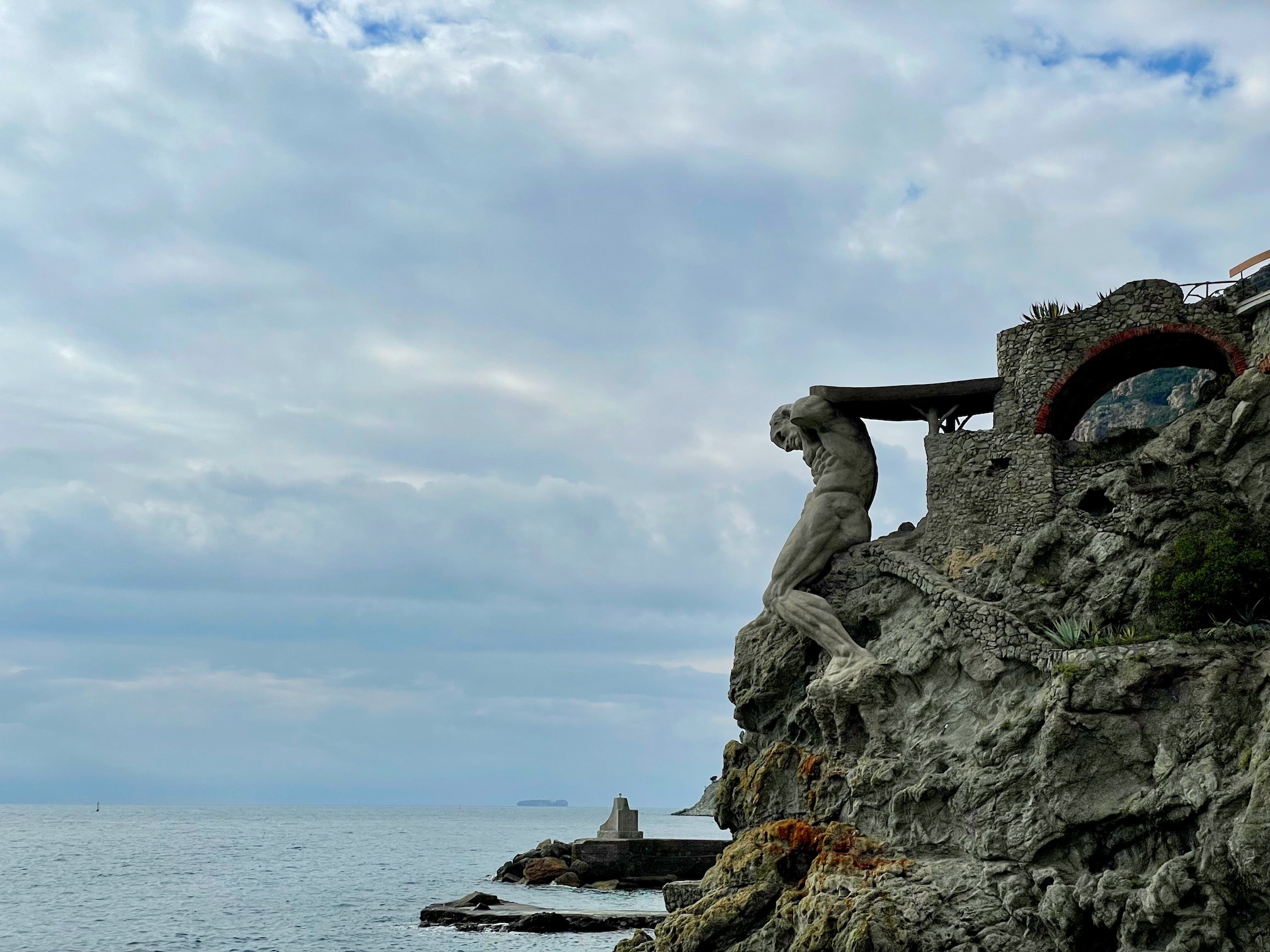

The hike from Monterosso -> Vernazza is about 2-3 miles, with 668 feet of elevation gain and took us about 1-1.5 hours to do. But a forewarning...stairs! And more stairs! If you haven't gotten the theme of this walking route, there are a ton of stairs when hiking through Cinque Terre. Essentially to get to each town, you go up a hill and then back down the hill. This does mean there are some beautiful terraces you get to see (and occasionally walk through) as you go from town to town. But I did find, in some ways, going up and down the stairs was harder than the hiking we did in the Dolomites.


Vernazza is also along the coastline, with a distinctive small harbor that curls around. At Vernazza, we stopped to eat lunch, which my two companions thought to be one of the food highlights of our trip (sadly, I do not remember the name, but it was along the main route/road). Again, like all of the towns, Vernazza is not very large and we could explore the town center largely by foot. Generally as we approached each town's main street, there would be more people, but Vernazza was probably one of the more "crowded" towns of the five we visited.


From Vernazza, we set off for Corniglia, where we would spend the night. We had gotten rained on a very tiny bit as we approached Vernazza, but the weather in general held up for us and was good throughout our trip. Similar in profile to the Monterosso -> Vernazza leg, Vernazza ->Corniglia took us about 1-1.5 hours, with 2-3 miles of distance and 740 feet or so of elevation gain. We checked into our hotel (which took us some time to find sadly, but was quite spacious) and set off to view sunset, which provided us some glorious colors.
Afterwards, we had a late, but fulfilling dinner at A Cantina da Mananan, where we learned that grappa is not grape juice.
Day 9: Manarola, Riomaggiore
The cadence of this day is very similar to the previous, where we traverse from town to town. Because of a route change/closure, the path to Manarola went through Volastra, a town on the hillside. In total, the path to Manarola through Volastra was about 4 miles with ~993 ft of elevation gain and took us about 2 hours. Throughout this route especially, there were some nice views of the terraced farming done in the area and particularly of grapes and olives. While visiting the area you are sure to see options to sample the local wine produced from the area. I'm personally glad we choose to go this direction -- it seemed there were quite of stairs going up to Volastra if coming from Manarola, which frankly might be my bane of this portion of the trip. In Manarola by virtue of being near the sea, there was the opportunity to go swimming and cliff jumping in its small harbor.



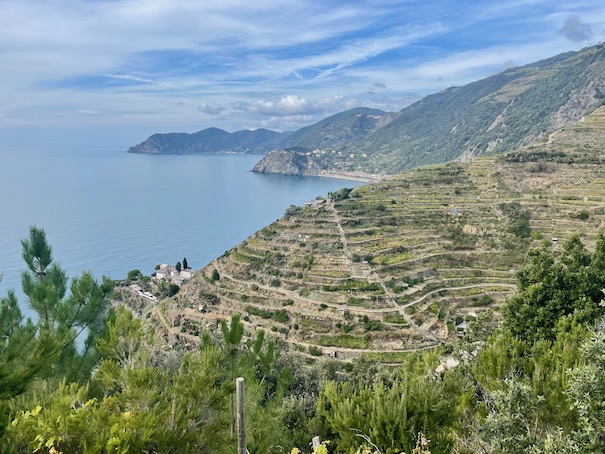
The final town we visited was Riomaggiore. The trek over to Riomaggiore was the shortest at roughly at about 1 mile, with 500 ft of elevation, and taking about one hour with stops. The profile is largely just up and then back down (a theme of Cinque Terre). Riomaggiorre is not a large town and the train station is separated from the main strip by a pedestrian tunnel. That being said, we arrived early enough before our train to grab some food and relax on a nearby beach. The sunset that day was absolutely stunning!


From Riomaggiore, we took the train back to La Spezia and then Florence. Cinque Terre is an easily doable weekend trip from Florence and walking through the five towns was a lovely addition to our trip.
Florence: Part 2
Day 10
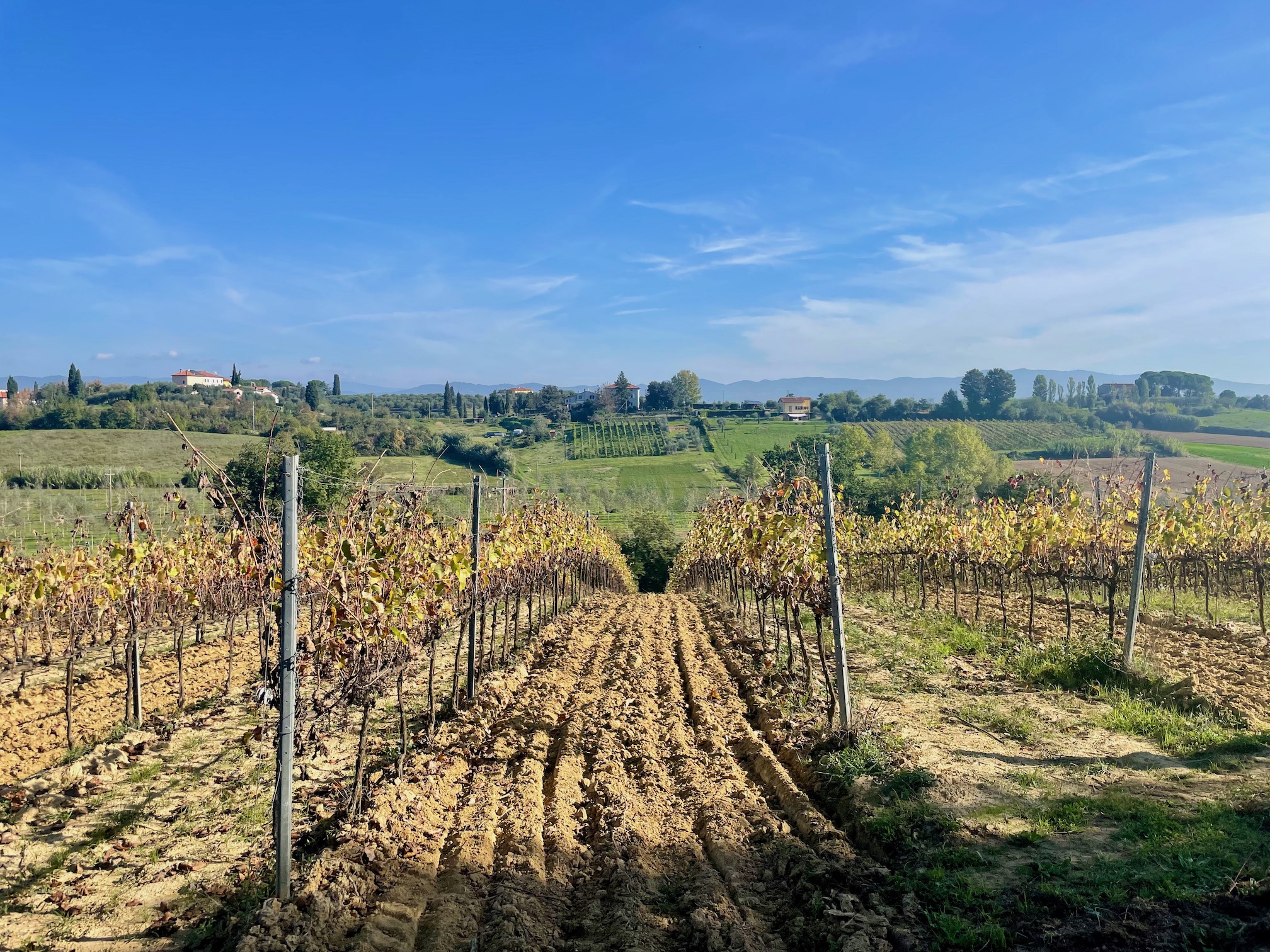

We took this day a bit easier to rest up after our mini-backpacking trip in Cinque Terre, and did an Airbnb Experience with a smaller winery/farm where we tasted some wine, made pasta, and had a late lunch in the vineyard. It is also possible to book a "fancier" tour out to some of the Tuscany wineries (Chianti tours are especially common), but I liked the variety of experiences of this one and the lower price point certainly didn't hurt.
We arrived back to Florence by train around 5:30-6 pm. It was perfect timing to visit the Piazzale Michelangelo and Abbazia di San Miniato al Monte for sunset. It is a lovely viewpoint over the city and perfect to catch the sunset from.
Day 11: Day Trip to Pisa


There are a number of day trips you can take from Florence, among them Pisa, Siena, and Bologna (along with Cinque Terre above). We choose a second day trip of Pisa, about a one hour train ride away and with most of the "iconic" sites within a 20 or so minute walk of the train station. Of course, we took a stroll around the Leaning Tower of Pisa as well as the surrounding complex consisting of the Cathedral and Baptistery. It is also possible to buy tickets to actually climb and go inside of the respective buildings, but we decided not to.
Afterwards, we grabbed some food and walked around some of the streets before heading back to the train station. If you just want to take in the sights, it is possible to do as a half day or so trip, though it was also nice to take the sights in at a more leisure pace.
Day 12
The remaining days were spent exploring Florence. It certainly was a very different pace than our first whirlwind tour through Milan-Dolomites-Venice-Cinque Terre and gave us more time to just relax. Because of our Airbnb's central location, everything was walkable and the good weather made it pleasant to explore. Florence is home to a number of impressive museums of art as well as architecture.



Chief among those is the Uffizi Gallery, home of recognizable masterpieces such as the Birth of Venus, Venus of Urbino, and Judith and Holofernes. Beyond just the floors of art and sculpture, the building that houses the collection is also quite memorable and fits in well with the art it houses. It would be quite easy to spend half a day here, but for most people it would probably be a 3-4 hour visit. We purchased the combined ticket, which allowed us access to five attractions within five days (including the Pitti Palace and Boboli Gardens), though there are no "repeats". You select a time/date to enter the Uffizi and you pick up the ticket that allows you to visit the rest at your own timing.
After grabbing lunch, I set off to climb Brunelleschi's Dome, the top of the Florence Cathedral and at its time the largest dome ever built. I purchased the Brunelleschi Pass option, which again was a combo ticket that allowed access to the dome as well as other nearby monuments e.g. bell tower, bapistry. The dome was a timed ticket whereas the remaining were at at your own timing, within 3 days of the dome visit. It is worth noting the Florence Cathedral is free, but there was a long line for the entrance when I visited.




There are 463 stairs to climb to reach the top, with the ending staircase becoming progressively narrow. You pass through part of the cathedral as well on the route and it was cool to see the cathedral looking down. When you reach the top, you get quite literally 365 degree views of Florence. You get a view of the Giotto's Bell Tower, but its from the bell tower that you get a view of the Dome and Cathedral.
After visiting the dome, I quickly visited the Opera del Duomo Museum which is part of the Brunelleschi Pass and contains actually most of the original sculptures and art that was created for and placed inside of the Cathedral. Unfortunately, the Baptistery of San Giovanni (or St. John) was under restoration while I was there, but you could still see the exterior and famous doors (though the originals are inside of the Opera del Duomo).
Day 13
This was a bit of a light day, where the main activity I partook in was climbing Giotto's Bell Tower or Campanile. Again, if you have to chose one monument to climb, the nice part of the bell tower is that you get to view the Cathedral from the top whereas obviously if you climb the Cathedral, you can only view the bell tower. However, if you have time, both are enjoyable to do!



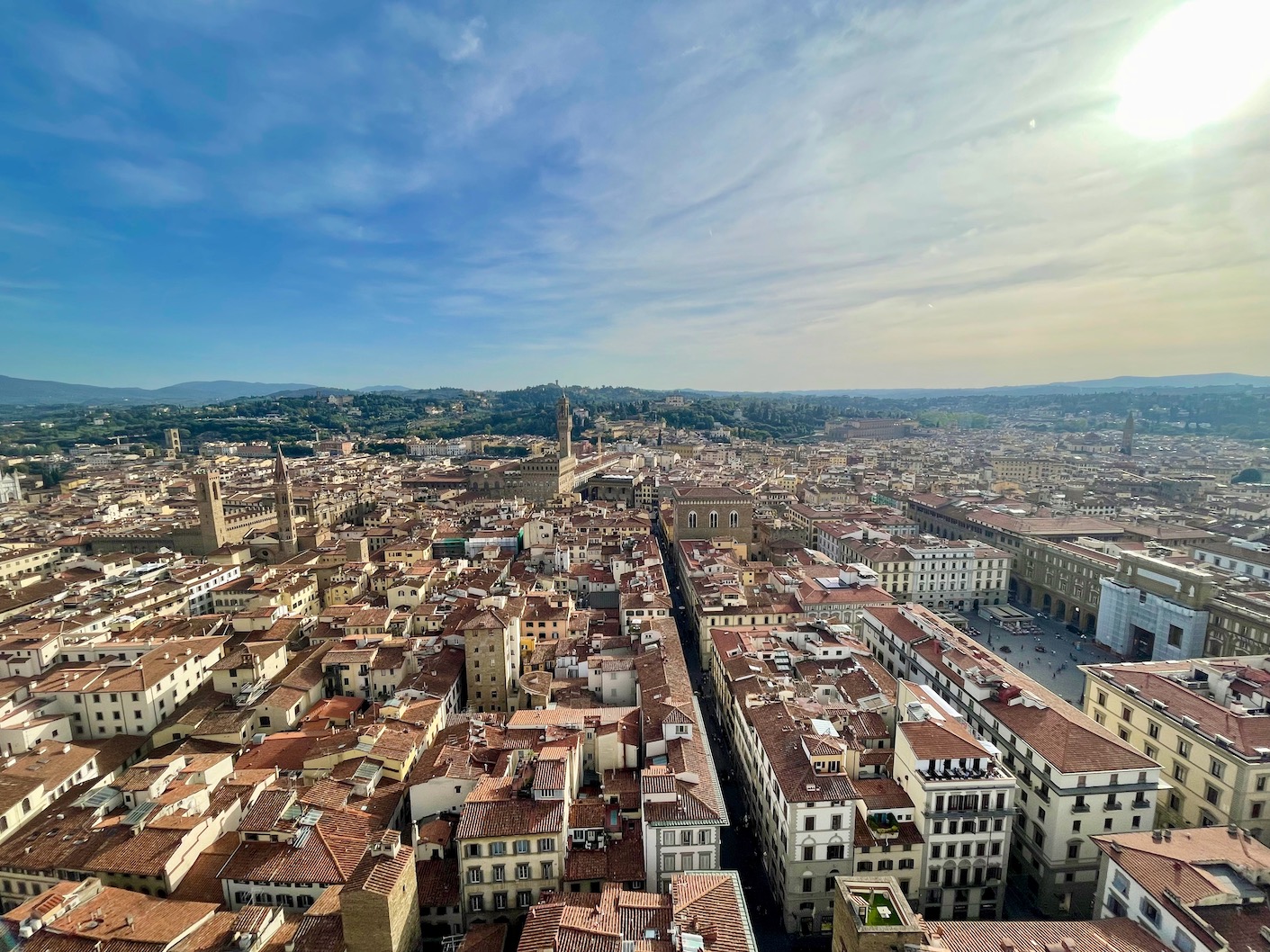
There are 414 steps up to the top of the bell tower, though there are places you can rest for a bit. Moreso than the dome, it is generally just stairs winding all the way up. At the top, you are treated to a panoramic view of Florence. The architecture in Florence is quite distinctive and is anchored by the blocky design of the Florence Duomo.
Day 14
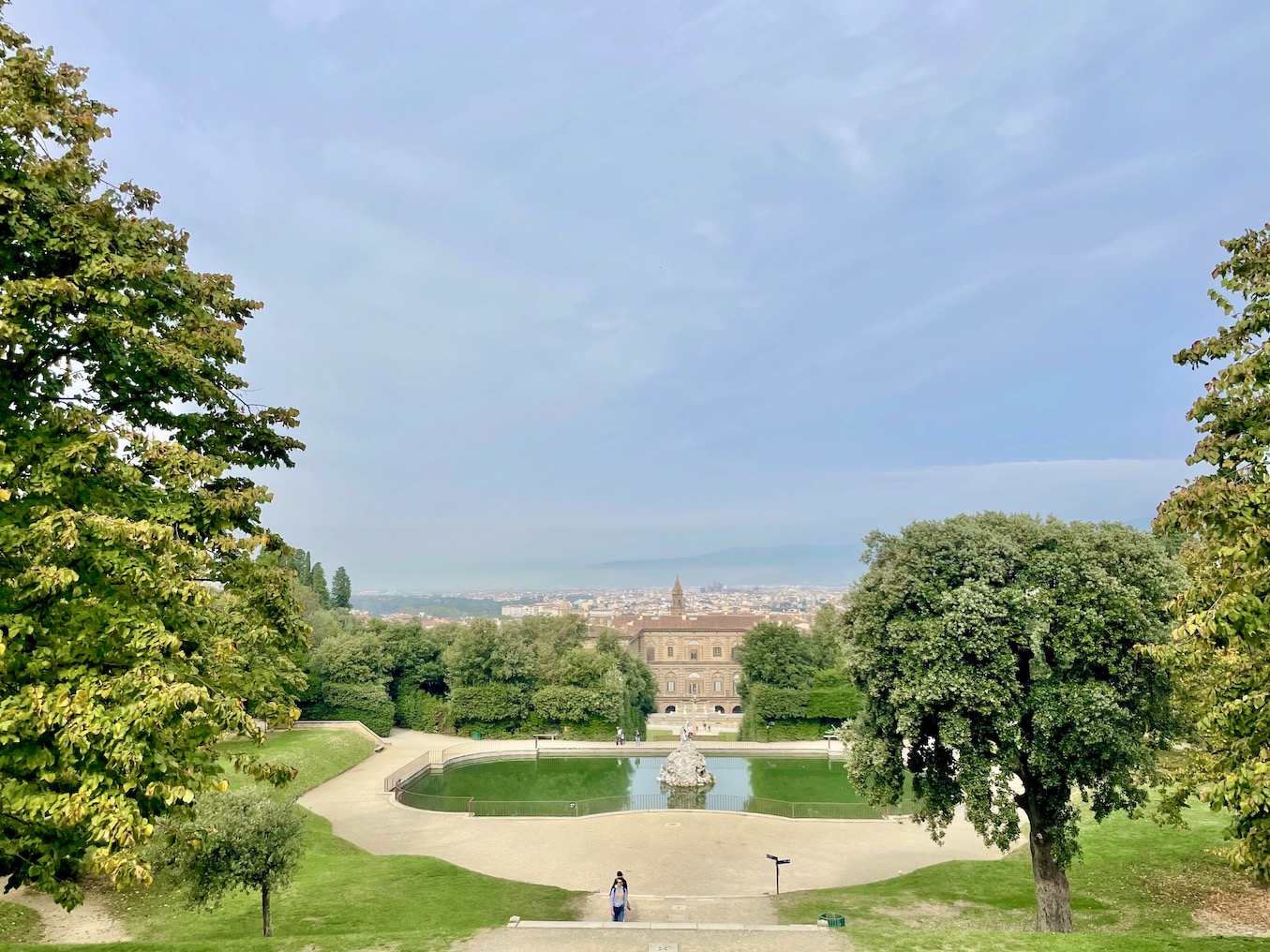


On this day, we first visited Boboli Gardens, which is included as part of the Uffizi combo pass purchased earlier. The gardens were a nice break from the museums and churches we had visited, though I will say I did not find them necessarily particularly impressive. You can easily spend 1-2 hours strolling around the grounds and there are an assortment of terraces, fountains, and sculptures to view.



After wandering around the gardens, I visited the Pitti Palace, which is the building that the gardens are attached to. It gave a decent impression of what the rooms must have looked like when used by the Medici Family. There were essentially sections of the building you could visit, each showcasing a different theme or exhibit. Again, like the gardens, this ticket was already included in the combo pass we had picked up earlier. We didn't end up visiting the other two attractions part of the ticket, but even with 3/5 it was worth it in terms of value.
Day 15


This was a rest day for us as well as being a buffer day in case there were things we didn't manage to catch from the day before. I considered going to the Bargello Museum, but ended up strolling around instead. I did a little bit of (tax free!) shopping, visited the Il Porcellino statue, and picked up some art from the artists on the street. Indeed, one of the most memorable moments was chatting with one of the artists whose station was near the Uffizi Gallery for some time. I had spoken with him on a previous day, and he remembered me as I passed by on the days after.
And of course, as our last meal in Florence, we had some Florentine steak :)
Day 16 (morning)
Today we headed off to Rome... but before that I caught the sunrise at Piazzale Michelangelo in Florence. It was a bit of a cloudy day so the sunrise wasn't quite as impressive as it could have been, but still worth the walk up. You get a panoramic view of the city as well as an arsty shot of (a copy of) the David statue.

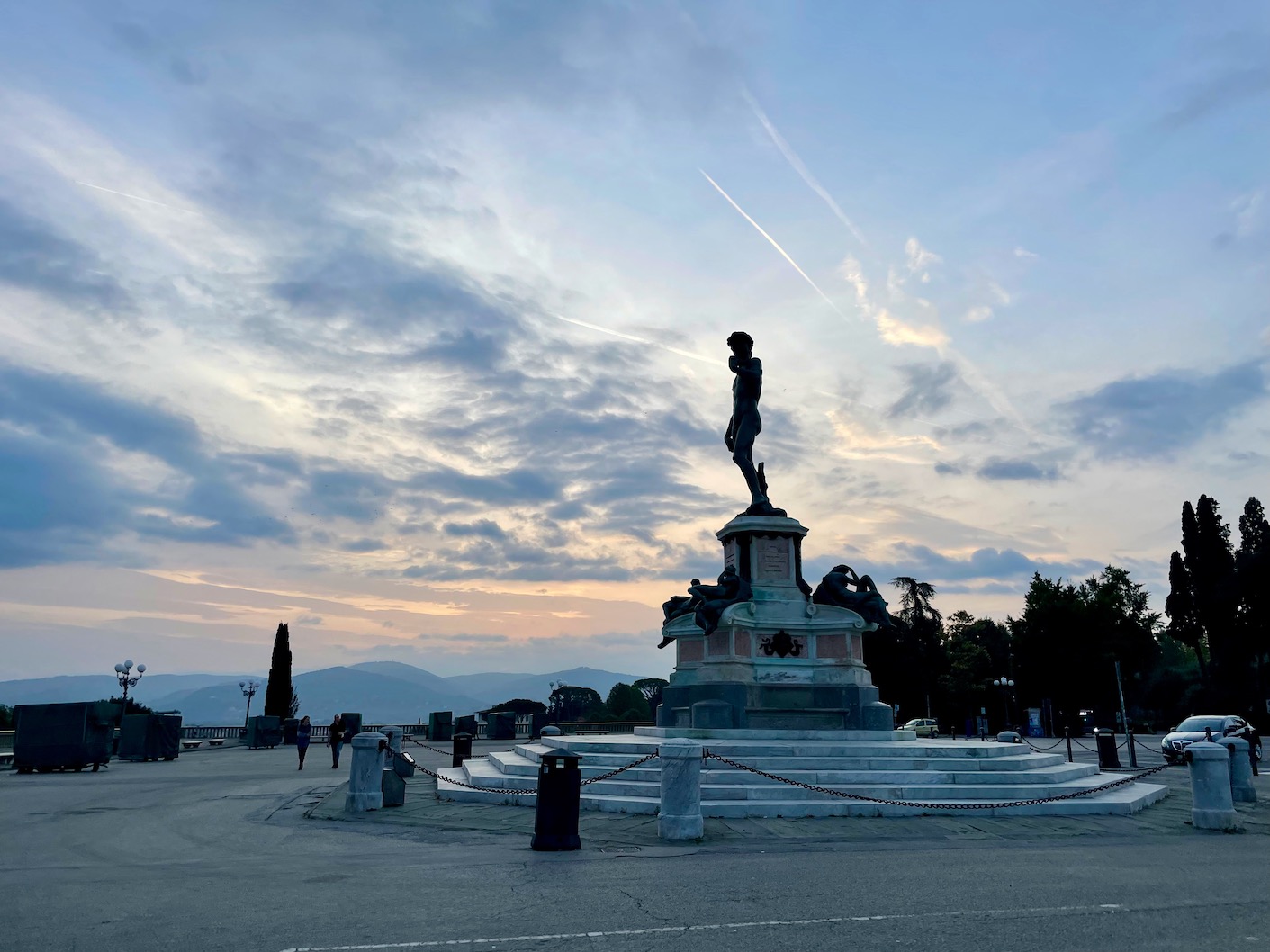


Rome
As mentioned earlier, I had been to Rome before on a previous trip so was not quite as diligent in terms of viewing the "tourist" sites. So this is very much a not comprehensive itinerary... I would definitely add on at least Castel Sant’Angelo (especially for sunset!), Borghese Gallery, and to actually go inside the Coloseum, Roman Forum, St. Peter's Basilica and more.
Day 16 (afternoon)
The train to Rome took only about 1.5 hours and was relatively straightforward. After arriving, we headed to our Airbnb, which was near the Vatican and grabbed some lunch nearby. After lunch, we walked over to Saint Peter's Square where Saint Peter's Basilica is also located.


I walked from Saint Peter's Square over toward Castel Sant’Angelo and across the river to the Spanish Steps. There, I ended up doing some more wandering and luxury brand shopping (luckily, it was one of the few times the Euro was actually weaker than the US dollar!) while the others in my group went back to rest a bit. The lines for these stores in Florence were generally non-existent, but were sometimes quite long in Rome so if you have the choice, picking up your desired items in other cities may be more efficient. In the evening, others in my group went to the Roma v Napoli football game while I attended an opera concert.
Day 17




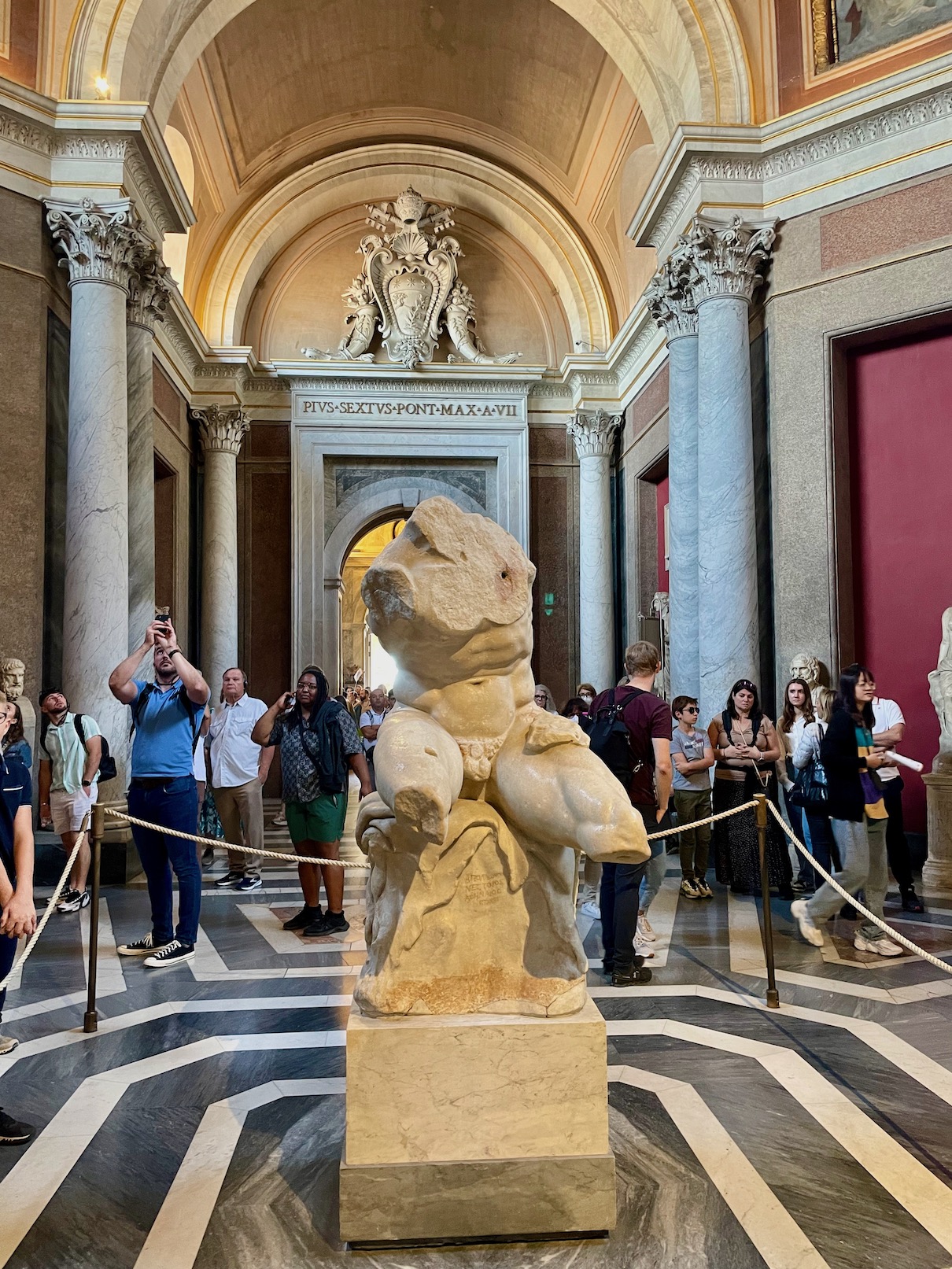
One of the attractions in Rome 100% worth pre-booking is the Vatican Museums. It's usually a bit easier to score one of the tickets that include a tour, and after the tour you are allowed to spend as much time in the museum as you want. The museums are an impressive collection of art and sculpture and there are quite a few you are sure to recognize even if you aren't a art buff -- the Sistine Chapel, School of Athens, Laocoön and His Sons, and more. For me, this is one of the art museums I would definitely repeat.

The Vatican isn't very large and the museums are within walking distance of Saint Peter's Square/Basilica so you could also do one after the other. The basilica tends to have long lines, so going early might mean you don't have to wait as long. Like the basilica, the one downside of the Vatican Museums is there a ton of people who are also visiting the museum at the same time as you, which is why reserving ahead of time (which lets you skip the line) is necessary. The lines were literally out the door! (for good reason)
In the afternoon, I did some more shopping while also dropping by the Trevi Fountain and Spanish Steps again.
Day 18
This was my last full day in Italy! And I did not take it all that slow :) There were a few new sights for me on this day, but also since they were on the way, quick stops at some of the bigger tourist attractions as well. I love visiting Rome for how it is somehow both a modern city but with literally ruins and remanants of an ancient city just around every other corner.



My first stop was Basilica Parrocchiale Santa Maria del Popolo, a church with two paintings by Caravaggio I wanted to see -- the Conversion of St. Paul and the Crucifixion of Saint Peter. My second stop was Santa Maria della Vittoria, a church as well, but with this time the main art I wanted to see being the sculpture Ecstasy of Saint Teresa. Both are pretty quick stops, but nice to drop into if you are in the area.
Now I went on a whirlwind of a few stops, walking over to the Pantheon before passing by the Victor Emmanuel II Monument, Roman Forum (with Trajan's Column), and Colosseum. There was enough time for me to go into the Pantheon (which is also free), but the other two I had been to before so mostly just walked by and took some photos. I also walked through the Circus Maximus, which in its hey day was one of the key entertainment and chariot racing venues, but today was basically a large grassy field.



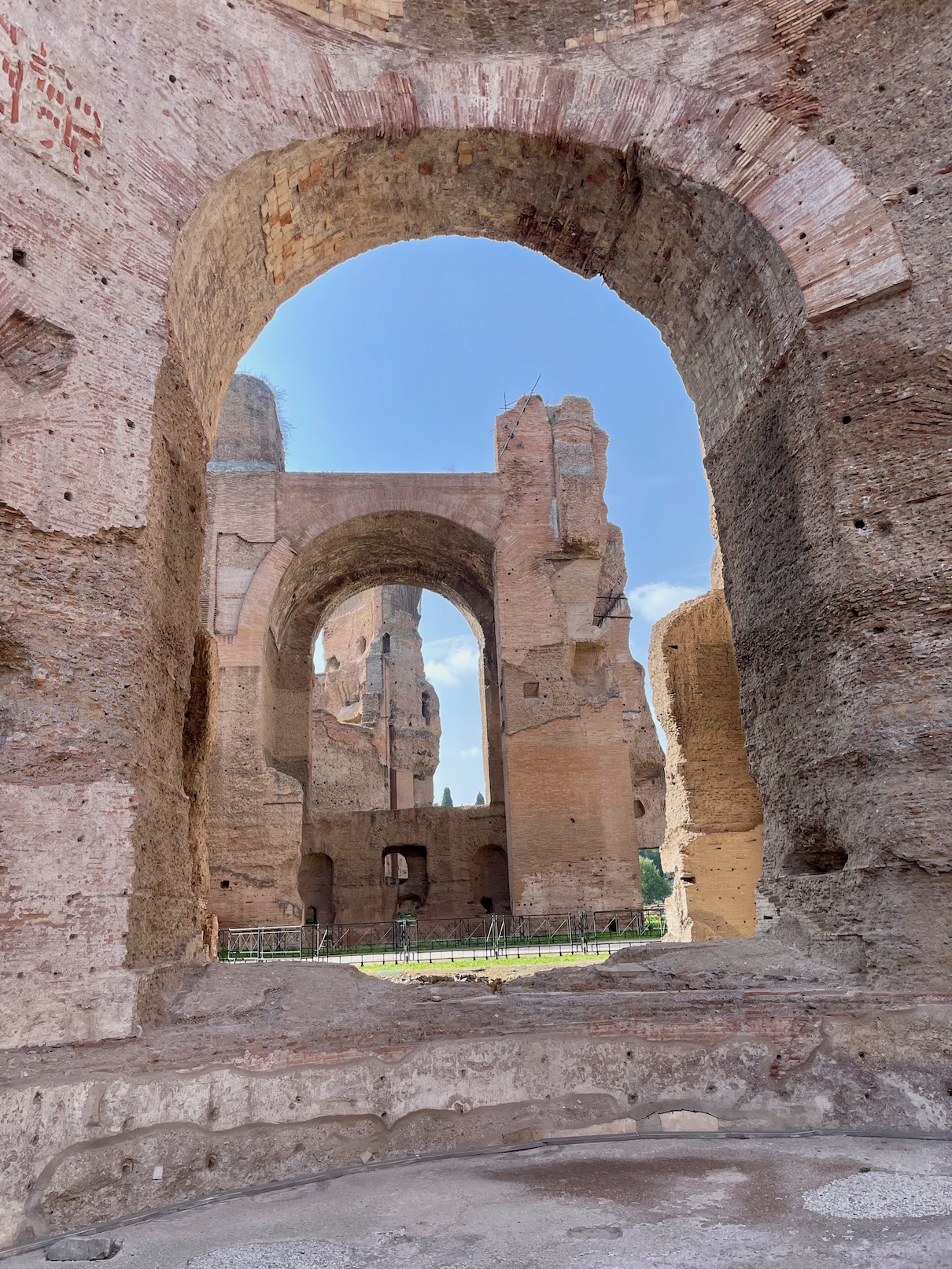
The last main stop for the afternoon was the Baths of Caracalla, which are the ruins of what was once one of Rome's largest public baths. It was quite cool to see the enormity of the structure that was left behind and to imagine what this would have looked like in its prime. Pieces of mosaic were displayed throughout, but just the sheer scale of the stone itsel was impressive.
For dinner (my last supper), we had made reservations at La Pergola, a 3 star Michelin restaurant with a breathtaking view of the city. Honestly, one of the iconic moments of the meal was trying to chose a bottle of water from the literal multi-page menu of water options they had (some of the people I was with also swore by the butter and bread). I was pleasantly surprised at the price, which while not cheap, was in line with what to expect for a restaurant of that caliber.
But that also concluded my just over 2 week journey to Italy. It was the first international trip I had made after Covid started in 2020 and the longest I had ever been abroad in one country. I loved the pace -- some fast and some slow -- we went at, as well as the variety (I certainly didn't expect mountains!), and moments to be cherished all the while. Certainly a trip to be remembered!
Glacier
Lakes, mountains, wildlife 👇
Zion
Desert scenes like no other 👇
Patagonia
Trek for a lifetime 👇

